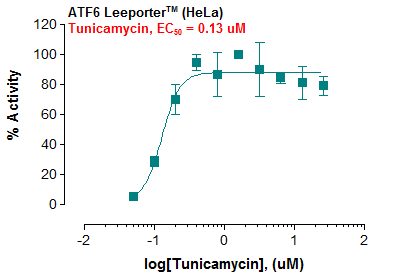Recombinant Human MARCKS-Like 1
Shipping Info:
For estimated delivery dates, please contact us at [email protected]
| Amount : | 10 µg |
| Purification : | Greater than 90% as determined by SDS-PAGE. |
| Content : | The MARCKSL1 solution (0.25mg/ml) contains 20mM Tris-HCl buffer (pH 8.0), 0.1M NaCl and 20% glycerol. |
| Storage condition : | Store at 4°C if entire vial will be used within 2-4 weeks. Store, frozen at -20°C for longer periods of time. For long term storage it is recommended to add a carrier protein (0.1% HSA or BSA).Avoid multiple freeze-thaw cycles. |
| AA sequence : | MGSSHHHHHH SSGLVPRGSH MGSMGSQSSK APRGDVTAEE AAGASPAKAN GQENGHVKSN GDLSPKGEGE SPPVNGTDEA AGATGDAIEP APPSQGAEAK GEVPPKETPK KKKKFSFKKP FKLSGLSFKR NRKEGGGDSS ASSPTEEEQE QGEIGACSDE GTAQEGKAAA TPESQEPQAK GAEASAASEE EAGPQATEPS TPSGPESGPT PASAEQNE. |
| Alternative Name : | F52, MACMARCKS, MLP, MLP1, MRP, MARCKS-related protein, MARCKS-like protein 1, Macrophage myristoylated alanine-rich C kinase substrate, MARCKSL1. |
Source : E.coli.
MARCKSL1 Human Recombinant produced in E. coli is a single polypeptide chain containing 218 amino acids (1-195) and having a molecular mass of 21.9kDa. MARCKSL1 is fused to a 23 amino acid His-tag at N-terminus & purified by proprietary chromatographic techniques.
MARCKS-related protein (MARCKSL1) which is a part of MARCKS family of PKC substrate is broadly used in the signal transduction studies as an indicator of PKC activation. MARCKSL1 plays a part in the coordination of membrane-cytoskeletal signaling events, including secretion, migration, phagocytosis and cell adhesion and is expressed in a variety of tissues with highest levels found in testis and uterus. Furthermore, MARCKSL1 serves as a regulator of Integrin activation and is thought to regulate Integrin-dependent signal transduction pathways, particularly those involved in macrophage spreading.
For Research Use Only. Not for use in diagnostic/therapeutics procedures.
|
There are currently no product reviews
|
















.png)









